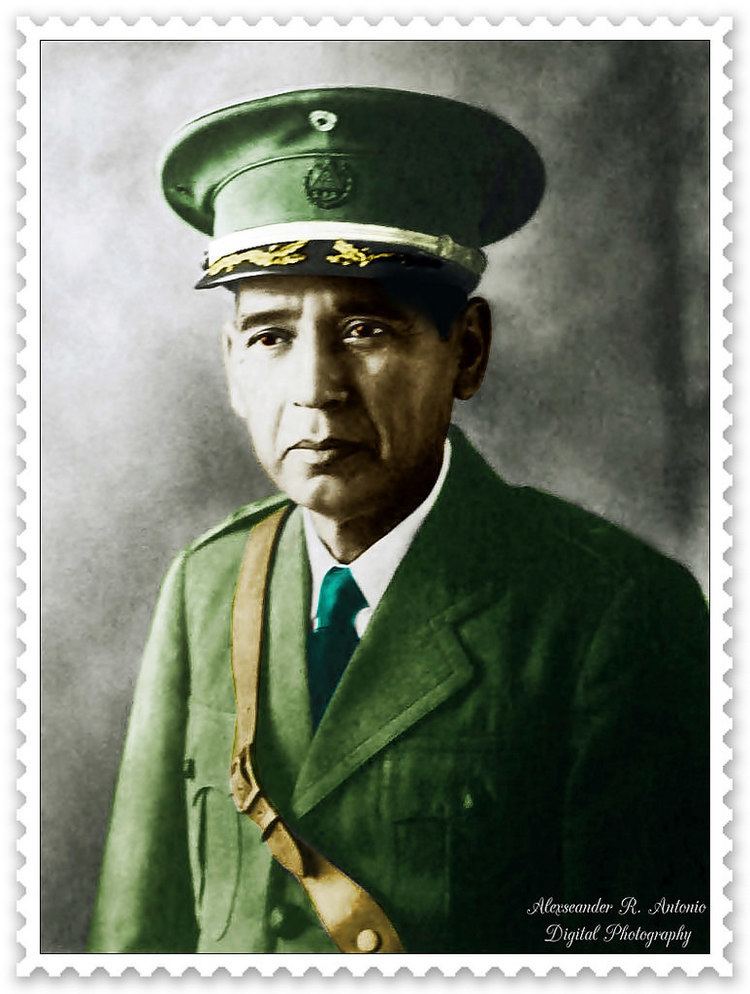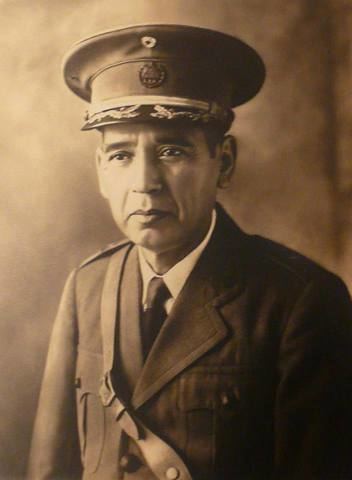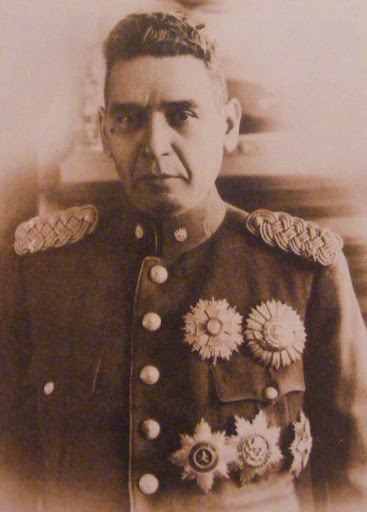Assassinated 15 May 1966, Honduras | Occupation General | |
Died May 15, 1966(1966-05-15) (aged 83)Hacienda Jamastrán, Honduras Religion Theosophy (formerly Roman Catholicism) Similar Farabundo Martí, Fidel Sánchez Hernández, Jorge Ubico, Schafik Handal, Óscar Romero | ||
Maximiliano hern ndez mart nez presidente 1931 1944 2003
Maximiliano Hernández Martínez (October 20, 1882 – May 15, 1966) was the President of El Salvador from 1931 to 1944. While he served as President Arturo Araujo's vice-president and defense minister, a directorate seized power during a palace coup and afterwards named General Hernández Martínez president of El Salvador.
Contents
- Maximiliano hern ndez mart nez presidente 1931 1944 2003
- Rise to power
- 1932 Salvadoran peasant massacre
- Palm Sunday coup
- Legacy
- References
Rise to power

Hernández Martínez was born in San Matías, La Libertad. In the 1931 presidential election he was initially a candidate for his newly formed National Republican Party. He joined forces with Arturo Araujo of the Partido Laborista, running on a reformist platform. The ticket won the election, considered the first free multiparty election in Salvadoran history and the last for over half a century.
The reason for the coup was that military personnel had not been paid their salary, although it is sometimes attributed to the fall in prices of coffee abroad. The reality is that officers were not paid and the Finance Minister had paid only the police, who remained loyal to the president. The army officers were angry and ousted President Araujo.
1932 Salvadoran peasant massacre

Hernández Martínez led a military government that actively suppressed opposition, most notably the 1932 Salvadoran peasant massacre, where thousands of indigenous Salvadoran people were systematically murdered if they were suspected of collaboration with the Communists, led by Farabundo Martí. This massacre came to be known as La Matanza. The specific number of victims is unknown, but estimates range from 10,000 to 40,000 for the entire rebellion. American historian Thomas Anderson says there were no more than 10,000 killed. He does accept that the military killed people without a judgement and that they were usually killed by a firing squad after being compelled to dig their own graves. Usually they only needed to be Indian, usually male, from the town, and listed as voters of the Communist party in that town.
Palm Sunday coup

When Hernández Martínez raised the export tax in 1943 the weary distrust among oligarchic landowning elites over his modest land reform efforts and eccentric ways turned to conspiracy and opposition. He openly violated the constitution by declaring that he would serve a third term without holding elections.

In response, an armed revolt broke out on Palm Sunday, April 2, 1944, led by intellectuals, business leaders and disloyal segments of the military. While top members of the regime leadership were at home for Holy Week, the strategic First Infantry and the Second Artillery regiments of San Salvador and Santa Ana garrison seized the state radio station, took control of the Air Force and seized Santa Ana’s police headquarters and telegraph offices. Santa Ana was bombed from the air as civilians below rallied, overthrew and replaced their city council. However, Gen. Hernández Martínez was able to put down the rebellion with his remaining obedient military units. Martial law, including a police curfew, was declared in effect and savagely enforced. Reprisals against rebels and suspected rebels began right away and lasted for weeks in a highly public and distressing campaign of repression. More than 100 civilians were shot dead in street demonstrations by the army.

Soon after, however, in May 1944, Hernández Martínez was deposed by the Strike of Fallen Arms led by students. Their strategy was to avoid direct confrontation with the regime's soldiers by simply, passively, non-violently staying home. During this massive political action, Salvadoran society was completely paralysed until he was deposed. Doctors and other professionals joined on May 5, successfully turning it into a general strike. On May 7 police fired into a group of youths, and fatally struck a 17-year-old who happened to be a U.S. citizen. This increased the pressure on the regime.

After attempting to negotiate a later departure date, Hernández Martínez resigned outright. By May 11 the strike was over, and he had fled to exile in Guatemala. Ironically, the revolt then spread to Guatemala, where the similar military leader Jorge Ubico was also forced to resign by July 1.
Legacy

Much of El Salvador is still divided over the legacy of Hernández Martínez's tenure. While El Salvador had seen economic growth during his leadership and he was admired by the wealthy elite, the country experienced widespread social unrest, most significantly the 1932 Salvadoran peasant massacre. In terms of civil rights, his record was mixed. He'd expanded voting rights to women for the first time, enacted some social security programs and attempted to manage the economy, in contrast to the economic policies of Liberal regimes that had ruled El Salvador since the 1870s. But his regime censored the media, banned political opposition, abolished local elections, rigged national elections and brutally killed thousands of dissidents and innocents.
After being deposed, Hernández lived in Honduras until he was stabbed to death at Hacienda Jamastrán, on May 15, 1966, by his driver, Cipriano Morales, whose father had been murdered by Hernández's dictatorship. He remains one of the oldest politicians to be assassinated.
Hernández Martínez was a believer in fringe occultism. When a smallpox epidemic broke out in San Salvador he had colored lights hung around the city, in the belief that this would cure the disease. He also believed in reincarnation and once said that "it is a greater crime to kill an ant than a man, for when a man dies he becomes reincarnated, while an ant dies forever."
During the country's civil war in the 1970s–1980s, an extreme right-wing death squad named after him operated in the country, and claimed responsibility for the assassination of many Christian Democrat and Marxist politicians as well as innocent civilians in El Salvador in 1980.
